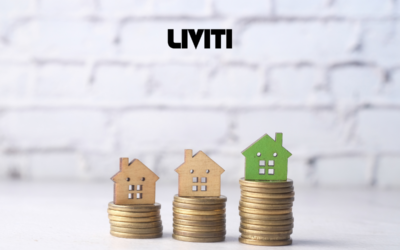Are you thinking of diving into real estate investment? It’s all about thoughtful planning and careful decisions. One big decision that can impact your success? Choosing the right suburb. The neighbourhood you pick can seriously affect how much money your property makes and its long-term growth.
How do you research a suburb for real estate investments?
Finding the best suburb for your real estate investment needs an intelligent approach. Our experts have broken down the essential things you need to know for a comprehensive suburb analysis for investors. This guide is here to help you pick the perfect suburb for your property investment journey, focusing on essential factors like suburb data, market demand, property prices, and potential for future capital growth.
1. Market Demand: Ensuring Steady Returns and Appreciation
For savvy property investors, understanding market demand is crucial. A vibrant suburb with high demand ensures a steady stream of tenants and potential buyers, leading to maximised rental yields and property value appreciation.
Utilise suburb data in your market research to identify areas with robust demand for rental properties and homes for sale. Look for low vacancy rates, indicating a high demand for housing. This data-driven approach elevates your decision-making process in real estate investment, aligning your goals with the potential for excellent returns and future capital growth.
2. Amenities & Infrastructure: Building Desirability
The vibe of a suburb depends a lot on what’s around. Think about the area’s schools, hospitals, shopping centres, public transport, and recreational facilities. A suburb with these amenities attracts quality tenants and enhances appeal for potential buyers.
Your real estate investment portfolio benefits from investments in well-connected and developed suburbs, setting the stage for future capital growth and solidifying your position in the real estate market.

3. Growth Potential: Planning for the Long Term
Identifying suburbs with solid growth potential is critical for long-term real estate investment success. When delving into suburb data, consider key growth indicators such as:
- Population Trends: Increasing population trends suggest a thriving community, which can drive demand for housing.
- Urban Development Plans: Explore planned developments and projects in the area, indicating potential growth and increased property values.
- Infrastructure Investment: Ongoing or planned infrastructure projects, such as new highways, public transportation, or commercial centres, can significantly impact a suburb’s growth potential.
- Employment Opportunities: Areas with a growing job market often attract more residents, leading to increased demand for housing.
Integrating future capital growth considerations into your suburb analysis for investors is critical. Investing in a suburb with a positive growth trajectory can secure immediate returns and lays the foundation for a thriving real estate investment portfolio with sustained future capital growth.

4. Rental Yield: Ensuring a Positive Investment Climate
Rental yield, a critical metric for real estate investors, is the return on investment from rental income. Suburbs with high rental yields offer better cash flow and ensure a consistent income stream, creating a favourable investment climate.
At Liviti, we delve into current data to meticulously analyse rental yields in the market. By examining property data, we provide valuable insights to calculate the potential rental yield of a suburb and property. This approach allows you to align your investment with your financial goals, ensuring that your property investment is successful and optimized for maximum returns.
5. Historical Growth: Leveraging Past Trends for Future Success
Choosing a suburb with a history of steady price growth is a smart move. Look at historical growth trends, suburb data, and property prices to identify areas likely to experience strong capital appreciation. By understanding past performance and prospects, you make informed decisions that enhance your overall real estate investment returns and contribute to future capital growth in your property portfolio. Look for suburbs that consistently demonstrate a positive trend in property values over the years.

Once you’ve narrowed down your suburb choices, there are some additional key areas to consider and analyse to ensure your investment thrives within your property portfolio;
6. Demographic Analysis: Understanding Your Target Audience
Unpacking demographics goes beyond just numbers; it’s about understanding the heartbeat of the community. Investors should delve into key demographic elements, examining age ranges, income levels, and lifestyle preferences of the population in your chosen suburb.
For instance, if the suburb is buzzing with young professionals, we recognise that properties catering to a modern and urban lifestyle may be in high demand. Our approach to demographic analysis at Liviti is more than statistics; it’s about understanding the people who make up the community.
Demographic insight allows us to tailor your property selection with precision. By aligning with the lifestyle preferences of your target audience, we not only enhance tenant satisfaction but also contribute to increased property value appreciation. It’s not just about knowing the numbers; it’s about understanding the unique story each demographic tells about your chosen suburb.

7. Economic Trends: Impact on Property Values
When evaluating the economic landscape of a suburb, you shouldn’t just skim the surface but thoroughly explore critical economic factors. These include closely examining employment rates, the pulse of local industries, economic growth trajectory, and even considering broader economic indicators like changes in the RBA cash rate.
A thriving job market isn’t just a number; it’s a clear sign of increased demand for housing. At Liviti, we understand the intricate dance between economic trends and property values. It’s not merely about predicting stability; it’s about foreseeing appreciation.
We recognize that understanding economic trends is not just a box to tick; it’s a compass guiding you towards long-term success in property investment. Because, in the realm of real estate, economic trends are more than figures—they’re the pulse of potential growth and stability.
8. Community Engagement: Building Strong Connections
Dive into the heartbeat of the suburb by immersing yourself in local events, community initiatives, and neighbourhood groups. Understanding the sense of community is about embracing the unique spirit that fuels the area.
A strong sense of community isn’t just a feel-good factor; it’s a catalyst for positive change. It plays a crucial role in enhancing property values and boosting tenant satisfaction.
Knowing the community vibes goes above just being aware; it’s actively participating. It allows you to position your investment property strategically, becoming an integral part of the local heartbeat. This contributes to the area’s liveability and adds an authentic appeal that resonates with tenants and potential buyers alike.

9. Technological Advancements: Smart Suburbs for Future Real Estate Investments
In the era of innovation, technology transforms suburbs into vibrant hubs. Explore how your chosen suburb embraces smart city initiatives and cutting-edge technological innovations. Consider advancements in tech infrastructure, sustainability practices, and connectivity.
Picture a suburb where smart home systems, renewable energy solutions, and seamless connectivity are the norm. Suburbs at the forefront of technological integration appeal to the tech-savvy and lay the groundwork for a more efficient and sustainable living environment.
At Liviti, we stay ahead of the curve, watching the latest technological advancements that redefine the landscape. Understanding how technology shapes the future of suburbs is not just a glimpse into innovation; it’s a roadmap for real estate investments that stand the test of time.
Overall Suburb Analysis for Real Estate Investment
Navigating the world of property investment means considering many factors. From understanding market demand, evaluating amenities, and assessing growth potential to analysing rental yield, historical growth, and demographic trends, this guide helps you see the big picture. Adding property data, economic trends, community feels, and tech moves gives you a toolkit for making smart decisions.
This guide goes beyond usual, giving you the tools and insights to rock your property portfolio and set you up for significant growth later. Whether you’re a property pro or just stepping into the real estate game, this guide ensures your choices bring in the maximum returns now and down the line.
So, are you ready to unlock those maximum returns? Liviti’s got your back. Contact us today and get started.
Additional Resources
- Learn more about the best suburbs to invest in Australia.
- Learn more about investment property taxes.
- Learn how you can buy investment properties with equity.
FAQ
How do I find the best suburbs to buy real estate?
To find the best suburbs for real estate, consider several key factors:
- Assess market demand for sustained returns and property appreciation
- Look for areas with increasing popularity and potential for future growth
- Prioritize suburbs with top-notch amenities and robust infrastructure
- Evaluate growth potential by considering upcoming developments and city planning initiatives for long-term benefits
- Analyse rental yields to ensure a favourable investment climate, focusing on areas with a healthy rental market
- Leverage historical growth data to identify trends and make informed decisions for future success in your real estate endeavours
Is it a good time to buy real estate in Australia?
Now is always a good time to consider buying real estate in Australia. Property prices have a track record of appreciating over time, making it a solid long-term investment. At Liviti, our experts offer guidance on market trends and help you make savvy moves, whether you’re a pro or a first-timer.
Should I invest in out-of-state properties?
Investing in out-of-state properties can be smart, bringing diversity to your property portfolio. Diversification spreads risk and enhances the potential for better returns. You can capitalize on different economic conditions, growth opportunities, and property trends by tapping into markets beyond your local area. This approach safeguards your investments and opens doors to new and potentially lucrative real estate ventures. So, if you’re eyeing a robust and varied property portfolio, exploring opportunities beyond your backyard might be the key to long-term success. Find out how Liviti can help you with creating a balanced and diversed property portfolio.




